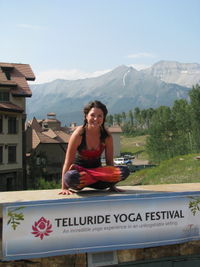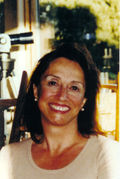Laughter as a Yogic Practice: Happiness is the goal of yoga- the goal of life
 This month’s focus for Jivamukti yoga is an interesting one. I am not sure exactly how the Telluride yogis are going to respond to hasahasana (laughter pose), but I am going to do my best.
This month’s focus for Jivamukti yoga is an interesting one. I am not sure exactly how the Telluride yogis are going to respond to hasahasana (laughter pose), but I am going to do my best.
One of my gurus and co-founder of Jivamukti yoga Sharon Gannon writes:
“Laughter is an ancient yogic healing technique that can rid you of deeply held negative emotions. It has profound therapeutic value in restoring wellbeing and health, leading to happiness. Laughter induces relaxation, and because of its ability to free the body and mind of pent-up emotions that are obstacles to self-reflection, it is a potent prerequisite to meditation. It is good when laughter is spontaneous, but when emotions have been buried for so long that they have become deep-seated tensions, the conscious practice of laughing can be very healing.”
Gannon then goes on to instruct students to roll around on the ground to induce laughing. Though we are not required as Jivamukti instructors to teach this exact approach to the focus, it is highly recommended. When your guru asks you to do something, a true yogi will take it upon himself to execute the request because performing a service for your teacher is one of the greatest acts of karma yoga.



